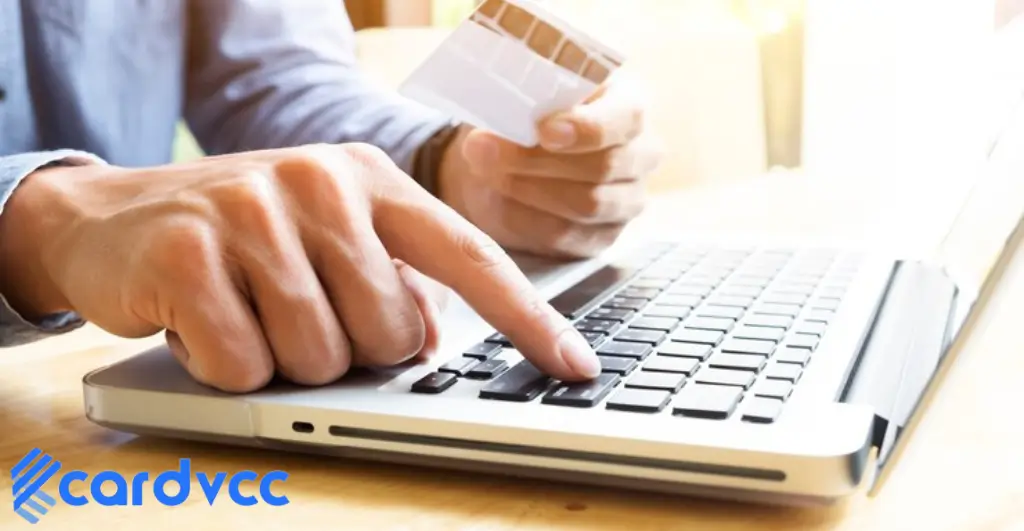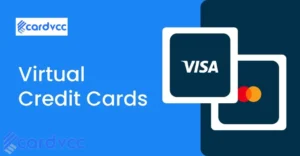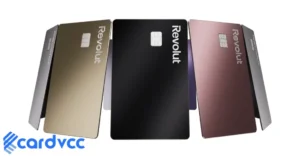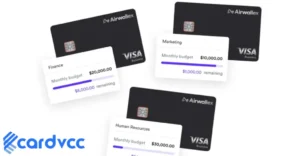To dispute a charge on a debit card, contact your bank immediately and provide details of the transaction. Follow their instructions for further steps.

Disputing a charge on your debit card can protect you from unauthorized or incorrect transactions. Banks offer dispute resolution processes to safeguard your finances. Acting quickly increases the chances of a successful resolution. Gather all relevant information, such as transaction details and receipts, before contacting your bank.
This preparation helps in clearly explaining your issue. Banks may require you to fill out a dispute form or provide additional documentation. Stay proactive and follow up to ensure your dispute is being processed. Understanding your bank’s policies can make the process smoother and more efficient.
Identifying Unauthorized Charges
Finding unauthorized charges on your debit card can be stressful. Learning to identify these charges quickly is important. It helps protect your money and keeps your account safe.
Reviewing Statements
Start by regularly reviewing your bank statements. This is the first step to spotting any suspicious activity. Look at each transaction carefully. Make sure you recognize every purchase.
| Date | Description | Amount |
|---|---|---|
| 2023-10-01 | Grocery Store | $50.00 |
| 2023-10-02 | Online Purchase | $30.00 |
If you see a charge you don’t recognize, don’t ignore it. Investigate it immediately. Contact the merchant if needed. If the charge is still unclear, move to the next step.
Recognizing Fraudulent Activity
Some signs can help you recognize fraudulent activity. These include:
- Unknown charges from unfamiliar merchants
- Multiple small charges in a short period
- Large purchases you did not make
Keep an eye out for these red flags. If you notice any, act fast. Contact your bank to report the suspicious charge. They will guide you through the dispute process.
Gathering Necessary Information
Disputing a charge on your debit card requires you to gather all necessary information. This process ensures that your claim is backed by accurate details and evidence. Below, we’ll delve into the key steps for gathering this information efficiently.
Collecting Transaction Details
Start by collecting all the details of the disputed transaction. Note the date of the transaction, the merchant’s name, and the amount charged. This information is essential for identifying the charge in question.
Check your bank statement or online banking platform to find this information. Ensure you record these details accurately. Double-check to avoid any mistakes. Correct information speeds up the dispute process.
Keeping Receipts And Records
Keep all receipts and records related to the transaction. This includes any emails or physical receipts received at the time of purchase. These documents serve as proof of your claim.
If you made the purchase online, save all email confirmations and screenshots. This includes order confirmations, shipping notifications, and any communication with the merchant. These records are crucial for validating your dispute.
Organize these documents in a folder or a digital file. Easy access to these records will help you present a well-supported case.
Here’s a quick checklist for gathering the necessary information:
- Transaction date
- Merchant’s name
- Amount charged
- Receipts and order confirmations
- Communication with the merchant
By gathering this information, you ensure a smoother dispute process. Accurate and complete details are key to resolving your issue.
Contacting Your Bank
Disputing a charge on your debit card can seem challenging. The first step is contacting your bank. This step is crucial in resolving the issue quickly and efficiently.
Customer Service Call
Start by calling your bank’s customer service number. This number is usually on the back of your debit card. Explain the issue clearly to the representative. Provide all necessary details like the transaction date, amount, and merchant name.
The representative will guide you through the dispute process. They might ask you to provide additional documents. Make sure to follow their instructions carefully. Keep a record of the call for future reference.
Online Dispute Submission
Many banks offer online dispute submission. Log in to your bank’s website or mobile app. Navigate to the dispute section, often found under “Account Services” or “Support”.
Fill out the online form with the required information. This typically includes the transaction details and the reason for the dispute. Upload any supporting documents if needed. Submit the form and wait for a confirmation email.
Online submissions are often faster and more convenient. They allow you to track the status of your dispute easily.
Filing A Dispute
If you spot an unauthorized charge on your debit card, take action quickly. Filing a dispute is the first step to address the issue. This guide will walk you through the process.
Writing A Dispute Letter
Start by writing a dispute letter to your bank. Keep it clear and concise. Here are the key points to include:
- Your full name and contact information
- Your account number
- Date of the disputed transaction
- Amount of the disputed charge
- Reason for the dispute
Here’s a template to help you:
Dear [Bank Name],
I am writing to dispute a charge on my debit card. Below are the details:
- Name: [Your Name]
- Account Number: [Your Account Number]
- Transaction Date: [Date]
- Amount: [Amount]
- Reason: [Reason for Dispute]
Please investigate this issue and credit my account accordingly.
Sincerely,
[Your Name]
Submitting Required Documents
Along with your dispute letter, submit any required documents. This can include:
- Receipts or invoices
- Proof of any prior communication with the merchant
- Copies of your bank statements showing the disputed charge
Submit these documents via the bank’s preferred method. This could be online, via mail, or in person. Confirm the submission method with your bank.
Keep copies of all documents for your records. Monitor your account for updates from the bank.
Following Up
After you dispute a charge on your debit card, following up is crucial. It’s important to stay on top of the process to ensure a resolution. Here are key steps to help you effectively follow up.
Tracking Your Dispute
Keep a record of your dispute. Note the date and time you filed it.
Use a spreadsheet or a simple notebook. This helps you stay organized.
Track communication with your bank. Write down the names and titles of the people you talk to.
Check for updates regularly. Banks often have online portals for this purpose.
Set reminders to follow up. Use your phone or calendar to alert you.
Communicating With Your Bank
Stay in touch with your bank. Regular communication can speed up the process.
Be polite and clear in all your communications. This helps build a positive rapport.
Ask for updates if you haven’t heard back in a while. Provide your dispute reference number.
Keep all your documents handy. This includes emails, letters, and receipts.
If needed, escalate the issue. Speak to a supervisor or manager for further assistance.

How Virtual Credit Cards Aid in Avoiding Cyber Fraudulent Activities
In today’s digital age, online security is crucial. Cyber fraud is a growing concern. Virtual credit cards offer a solution. They help in avoiding cyber fraudulent activities.
Understanding Virtual Credit Cards
A virtual credit card is a digital version of a physical card. It has a unique number, expiration date, and CVV. These details are different from your actual credit card.
How Virtual Credit Cards Work
When you use a virtual card, it links to your real credit card. However, it masks your real card details. This makes it safer to use online.
Advantages of Virtual Payment Tools
Virtual payment tools come with many benefits. Let’s explore some key advantages:
Enhanced Security
Virtual cards provide an extra layer of security. They prevent unauthorized access to your real card details.
Reduced Risk Of Fraud
If a virtual card is compromised, it can be easily deactivated. This reduces the risk of fraud significantly.
Ease Of Use
Virtual cards are easy to create and use. You can generate them instantly for online transactions.
Controlled Spending
You can set spending limits on virtual cards. This helps in managing your finances better.
| Comparison: Physical Credit Cards vs. Virtual Credit Cards | ||
| Aspect | Physical Credit Card | Virtual Credit Card |
|---|---|---|
| Security | Moderate | High |
| Risk of Fraud | Higher | Lower |
| Ease of Use | High | High |
| Spending Control | Limited | High |
How to Get a Virtual Credit Card
Getting a virtual credit card is simple. Follow these steps to create one:
- Choose a provider like Cardvcc.
- Sign up for an account.
- Link your real credit card.
- Create a virtual credit card instantly.
Join Cardvcc & Instantly Create Virtual Credit Cards
Cardvcc is a trusted provider of virtual credit cards. They offer a quick and easy setup process.
Visit cardvcc.com to get started. You can create virtual credit cards in minutes.
Temporary Credits And Refunds
Disputing a charge on your debit card can be stressful. Understanding the process of temporary credits and refunds can ease your mind. These credits act as a placeholder while your bank investigates.
Understanding Provisional Credits
Provisional credits are temporary funds added to your account during a dispute. These credits allow you to use your money while the bank checks the issue. The bank usually provides these credits within a few days.
Here is a simple table to understand how provisional credits work:
| Step | Description |
|---|---|
| 1 | Dispute initiated |
| 2 | The bank reviews your claim |
| 3 | Provisional credits issued |
| 4 | The bank investigates the charge |
| 5 | Final resolution provided |
Provisional credits help you maintain your balance. They ensure you can still pay bills and make purchases. These credits are not final but offer temporary relief.
Expecting Final Resolution
The final resolution depends on the bank’s findings. If the charge is valid, the provisional credit will be removed. If the charge is invalid, the credit becomes permanent.
The bank usually takes 30-90 days to reach a final decision. During this time, keep an eye on your account. Ensure there are no additional unauthorized charges.
Here are some tips to ensure a smooth resolution:
- Provide all required documents promptly
- Keep records of all communication with the bank
- Follow up regularly on the status of your dispute
Temporary credits and refunds offer peace of mind. They help you manage your finances during a dispute. Understanding this process ensures you’re prepared and informed.
Preventing Future Issues
Disputing a charge on your debit card can be stressful. To avoid this hassle in the future, take proactive steps. By monitoring your account regularly and setting up alerts, you can prevent unauthorized charges.
Monitoring Account Regularly
Check your bank account often. This helps you spot any wrong charges quickly. Make it a habit to review your transactions weekly. Look for any small charges you don’t recognize. These might be tests by fraudsters. Catching these early can save you trouble.
- Log in to your bank account weekly.
- Review all transactions carefully.
- Report any suspicious charges immediately.
Setting Up Alerts
Set up alerts on your bank account. Alerts notify you of new transactions. You can get alerts by email or text message. This helps you stay aware of any activity on your account.
Here’s how you can set up alerts:
- Log in to your online banking account.
- Find the alerts or notifications settings.
- Choose the types of alerts you want to receive.
- Save your settings.
Common alerts to set up include:
| Alert Type | Description |
|---|---|
| Transaction Alerts | Notify you of any new charges. |
| Low Balance Alerts | Warn you when your balance is low. |
| Large Purchase Alerts | Inform you of significant transactions. |
These alerts can help you react quickly to any unexpected charges. Staying proactive keeps your account safe.
Legal Rights And Protections
Understanding your legal rights and protections is crucial when disputing a charge on your debit card. Knowing these rights can empower you to take the right steps. This section will cover the essential consumer protection laws and bank policies you should be aware of.
Consumer Protection Laws
Several consumer protection laws safeguard your rights. These laws help you dispute unauthorized charges.
- The Electronic Fund Transfer Act (EFTA) offers strong protections.
- Under EFTA, you have 60 days to report unauthorized charges.
- The bank must investigate and resolve the issue within 10 days.
- If the bank needs more time, they must provisionally credit your account.
Understanding these laws can help you act quickly and correctly. Knowing your rights makes the dispute process less stressful.
Bank Policies
Bank policies also play a vital role in disputing charges. Each bank has its own set of rules and procedures.
| Bank | Dispute Timeframe | Required Documentation |
|---|---|---|
| Bank A | 60 Days | Transaction Receipt |
| Bank B | 45 Days | Written Statement |
Always check your bank’s specific policies. Knowing these policies can speed up the dispute process. Banks often require different types of documentation.
Contact your bank immediately if you notice an unauthorized charge. Prompt action is key to a successful dispute.

Frequently Asked Questions
Can I Dispute A Debit Card Charge That I Willingly Paid For?
Yes, you can dispute a debit card charge you willingly paid for if there is an error or unauthorized transaction. Contact your bank immediately.
How Do You Dispute A Debit Card Transaction?
Contact your bank immediately. Provide transaction details and reasons for the dispute. Follow their instructions. Keep records of all communications. Monitor your account for updates.
How Do I Cancel A Charge On My Debit Card?
Contact your bank immediately. Report the unauthorized charge. Request a dispute form. Provide necessary documentation. Follow up until resolved.
What Is The Best Way To Dispute A Charge?
Contact your bank or card issuer. Provide transaction details and any supporting documents. Request a chargeback. Follow up if necessary.
Conclusion
Disputing a charge on your debit card can be straightforward. Contact your bank promptly. Keep detailed records of all communications. Understanding your rights and following the correct steps can resolve the issue efficiently. Stay vigilant with your account to prevent future unauthorized charges.
Your proactive approach ensures financial security.
Read More- Best Virtual Credit Card Providers







